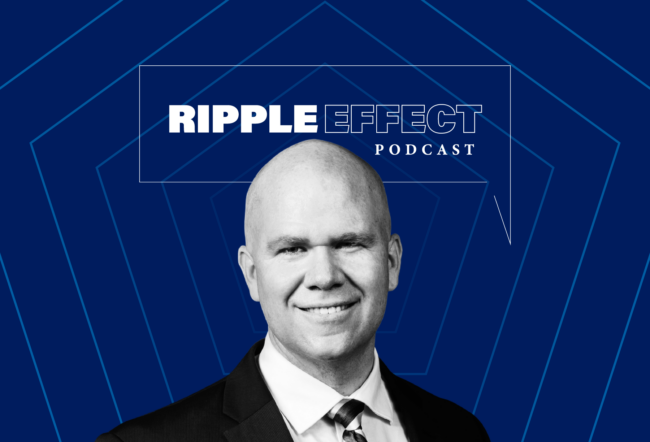The financial crisis has hamstrung many companies, forcing them to close their doors or go up for sale. Among the sectors most affected by the lack of liquidity is private equity, where 40% of all firms could eventually disappear, according to research from the IE Business School in Spain and The Boston Consulting Group. Given these conditions, large-scale corporate takeovers seem to have come to an end, but some big spenders are taking advantage of today’s bargain prices to make quick acquisitions. Experts warn, however, that the temptation to acquire assets at the best price shouldn’t win out over cautious analysis of target companies and the ruling out of any potentially ‘toxic’ assets on their balance sheets.
In Spain, private equity funds are beginning to see a reduced volume of interest in future investments. These institutions, which are professional buyers and sellers of companies, captured 50% less funding – or 2.56 billion euros – in the country during 2008 as a result of the economic crisis. “It is possible that [portfolio] managers will disappear; it has happened in other years,” noted Jaime Hernández-Soto, partner at the firm MCH Private Equity and president of ASCII, the Spanish managerial association, during an annual presentation of data about the sector in Spain.
Conditions in Spain are not very different from what private equity funds are experiencing around the world. Some 40% of all firms in the sector could disappear over the next three years, according to a study written by IE Business School professors Heinrich Liechtenstein and María Julia Prats and by Heino Meerkatt, an analyst at The Boston Consulting Group. Despite the bleak forecast, however, private equity funds in Europe have more than 700 billion euros to invest. According to the report, titled Prepare Yourself for the Shock of the Private Equity Sector, between 2003 and 2007, “[a]lmost every private equity company grew at an exponential rate thanks to the exceptionally favorable economic and financial climate. There were four major engines of growth: Enormous volumes of cheap debt; growing profitability in every sector; higher prices for assets; and the fact that important institutional investors allocated significant assets to private equity funds. The recent financial and economic crisis has changed trends in each of these [categories].”
Liechtenstein, Prats and Meerkatt predict a large number of defaults for the companies that run these funds, but they do not forecast an economic catastrophe. The most affected companies will be private equity funds themselves; between 20% and 40% of them could disappear. According to their report, only 30% of all private equity firms seem to be out of danger while the rest are being forced to make adjustments if they want to survive for more than three years. The authors propose that those companies that have liquidity begin by focusing on the better performers in their corporate portfolios, and by searching for opportunities to participate in those companies in their portfolios that are in trouble. They should also consider the possibility of offering financing to a broader, more general range of companies.
Some firms, such as Texas Pacific Group (TPG) as well as Permira (which owns the Dinosol supermarket chain and Telepizza, the pizza home delivery company), have agreed to let their investors reduce their contributions to funds — something unheard of for these firms. According to Hernández-Soto, “This is part of the remodeling process in the sector.”
For some time up until recently, private equity firms had been able to earn good returns without having to improve their portfolio companies. But in 2008, Liechtenstein says, “The 45% drop in valuations has changed the situation drastically, pushing multiples below the level of the previous three to four years. Our study suggests that almost 50% of the portfolio companies we analyzed could default during the next three years, and with profits deteriorating that number could grow. The private equity model is here to stay, but the shakeout will significantly change the shape of the industry”. In his opinion, pure debt and multiple players, for example, will disappear. “It is also likely that the winners will consolidate the market, lay the foundation for superior long-term returns by investing in cheap assets during the downturn, and emerge with an even greater focus on operational value creation”.
Why isn’t private equity getting financing? For Paz Ambrosy, professor at the IE Business School, “One of the keys is that these funds must earn a minimum IRR (Internal Rate of Return) of 30% every ten years. Funding is more expensive and harder to get than with other kinds of financing structures, especially debt. While it costs a minimum of 30%, the cost of debt in recent times has been infinitely cheaper –between 6% and 7%, for example.”
Confronted with the need to make strategic changes, Ambrosy warns of the importance of taking into account the reaction of the institutional investors who own shares in private equity funds. “The change in strategy must be very well founded because institutions may have the right not to continue with their commitment to these private equity firms. Don’t forget that private equity activity is about investing at a cheap price and, above all, about disinvesting at a good price and with the highest possible capital gains.”
Prats agrees that the shortage of liquidity makes it debatable whether some of the companies in the sector will continue to exist. “Clearly, there is going to be an adjustment in the market in those firms that have not learned how to adjust to specific cost criteria, and who do not have experience in monitoring [their investments] and being creative when it is time to invest. Creativity is needed. In addition, there are some institutional funds — such as pension funds, banks, insurance companies and so forth — that are not going to be able to meet their investment commitments. That is going to be a key when a private equity firm that wants to make transactions does not have enough liquidity from institutional investors.”
Most experts agree that large-scale corporate takeover deals came to a halt around the world in the middle of last year. Ambrosy says this is due in part to the fact that the prices for such deals remain high, and the multiples of some financial indicators, such as EBITDA, have failed to adjust to the crisis. Failure to achieve anticipated results through large-scale acquisitions has also had an influence, slowing down the wave of mergers and acquisitions that took place in previous years.
Nevertheless, Liechtenstein explains, “The absence of financing on the part of financial institutions – especially in working capital – is drowning many companies that depend on these lines of credit to keep operating; especially in distribution, foreign trade, purchasing raw materials, and industrial activity.” Although the price for some companies continues to be high – and despite the caution that prevails when it comes to making purchases – these conditions are producing a worldwide phenomenon of faster acquisitions, which are now in vogue.”
Mergers in the ‘Express’ Lane
The financial crisis has hamstrung many companies, forcing them to close their doors or hang out signs reading “For Sale.” So long as companies are less interested in making purchases, as is the case with private equity firms, there is a growing desire among business owners to sell their companies, avoid bankruptcy or avoid declaring insolvency. And the rules of the marketplace are very clear: Whenever supply increases and demand diminishes, prices go down.
Last year, the value of mergers and acquisitions dropped by about 30%, winding up at below $3 billion worldwide, according to Towers Perrin. The consulting group forecasts an additional price drop of between 25% and 30% for 2009.
Nevertheless, the best opportunities appear during a full-blown storm — especially for those who have learned to save during boom times. So, while the dollar value of mergers has declined, the number of deals has increased. Although 2007 was the year of multibillion dollar mergers, 2008 and 2009 will be noted by historians as the year when faster, “express-lane” mergers became fashionable. When companies go looking for bargains, however, they have less time for reflection and analysis. Two years ago, it took an average of 142 days between when a deal was announced and when the acquisition closed. Nowadays, contracts are signed in less than 80 days, according to a report by Towers Perrin and the Cass Business School in London.
“If you’re looking for bargains, you’re going to find them,” says Tony Gennaoui, a partner at Towers Perrin. However, Gennaoui warns that it is dangerous to act too quickly. The biggest benefit of taking more time is in the due diligence process, where you do a complete analysis of the company’s condition. The risk is that a company you acquired is on the verge of bankruptcy — damaged so much that it burdens your company’s viability in the future. Even so, the profitability achieved from these deals seems to compensate for the risks. Like business cycles, mergers happen in waves. Over the past three decades, there have been three peaks of activity: 1989, 1998, and 2007. In other words, one peak every ten years.
According to the Towers Perrin report, when the impact of the latest cycle is not excluded from the analysis, the profitability of merger deals made at the coldest point in these cycles is 0.2% lower than the average rate of gains in the stock market. For those unfortunate people who decided to make an acquisition a year before the crest in the cyclical wave, their returns were also negative, in this case 2% lower than the average performance in the market. Major deals usually peak before the beginning of a recession. During the year that follows that peak, however, the average return on M & A deals is 5.4% above the average performance in the market. So, 2009 could be a year that generates more value for private equity shareholders, because they are starting out with lower acquisition prices.
Beyond the amount of time involved in executing a deal, another difference between “express” mergers and traditional ones is the dollar value of the deals that do not exceed $2 billion each. Larger deals may be several times as costly. People say that “it is easier to manage a rat than an elephant,” and if you run the risk of buying toxic assets, explains Gennaoui, “it is advisable to leave a margin for contingencies because they will happen.” Nevertheless, poor evaluation of accounting risks is not the main cause for the failure of these mergers. Instead, it is the fact that the project has the wrong scale — especially when it comes to industrial firms, where there are fewer uncertainties on the balance sheet.
To get the best results from an “express” merger, Gennaoui believes that you shouldn’t lose sight of three fundamental factors during the first one hundred days: The first is personnel management, which involves identifying the best talent, paying them well, and giving them incentives for committing themselves to the acquisition. Second, you need to communicate the strategy and clarify the steps that are going to be taken. Third, you must evaluate the financial risks (such as pension plans). And if you don’t find time to do the analysis before you close the purchase, you need to do it right after the deal closes, he says.



